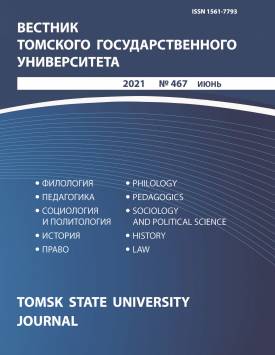Konstantin Balmont’s Translation Solutions of in the Light of Illustrations by Georgy Narbut: From Intermediality to Expression
The article examines the book of translations Calls of Antiquity (1908) by Konstantin Balmont as an intermedial project. Georgy Narbut’s and other early 20th-century illustrators’ contribution to this project consisted in the explanation that each culture has its own laws, and the isolation of literary genres is due not only to a written rhetorical culture, but also to types of ritual ecstasy. The illustrative program allowed looking at ecstasy not as an object of curiosity, but as a productive principle that overcomes the difference between oral and written utterances. The ecstatic then turns out to be a certain background, thanks to which, in translation, individual descriptive statements acquire a different modality and become part of the recognition of the mythological heritage of different world peoples as classics. Symbolism in Russia, which arose as an interest in contemporary Western literature, expanded the boundaries over time and began to include the reproduction of mythological poetry. Balmont’s book became an important milestone on this path, and the mentions of Sergei Gorodetsky and Thaddeus Zelinsky in it are not accidental. Balmont himself, an avid traveler, sought to find a common ground for symbolist poetry in myth and ritual, becoming an anthropologist. He understood translation as a new substantiation of symbolist poetry, no longer the fashion of today, but the fundamental principles of the ecstatic experience of ritual that overcome the difference between oral and written speech. In ecstasy, the fixation of experience coincides with its translation into other intermedial expressivities, into the codes of other semiotic systems. The concept of translation, which Balmont supported, also changed. For translation, the background, the understanding of the archaic world outlook became important: only by taking the position of the latter one can understand the content of the main genres of symbolism. Illustrations by Narbut, in which the background created a special key for reading individual images, contributed to the classicization of exotic traditions and greater public confidence in Balmont’s translations. The public got used to Balmont as a capricious and wayward poet, and this book was just supposed to correct his reputation, turning him into a poet capable of both theoretical comprehension and renewal of lyric genres, based on the deep concept of universal human emotions. To master this concept, he made translations in such a way that they were read in different ways by the specialist reader and the general reader. The specialist reader paid attention to formal decisions, while the general reader accepted Balmont’s searches and experiments as a necessary part of acquaintance with the exotic and, as it were, initiation into world culture. This approach contributed to the understanding of world culture in Russia as the development of the original mythritual syncretism as applied to intellectual tasks.
Keywords
Konstantin Balmont, Georgy Narbut, poetic translation, intermediality, translation style, expression, book illustrationAuthors
| Name | Organization | |
| Markov Aleksandr V. | Russian State University for the Humanities | markovius@gmail.com |
References

Konstantin Balmont’s Translation Solutions of in the Light of Illustrations by Georgy Narbut: From Intermediality to Expression | Vestnik Tomskogo gosudarstvennogo universiteta – Tomsk State University Journal. 2021. № 467. DOI: 10.17223/15617793/467/4
